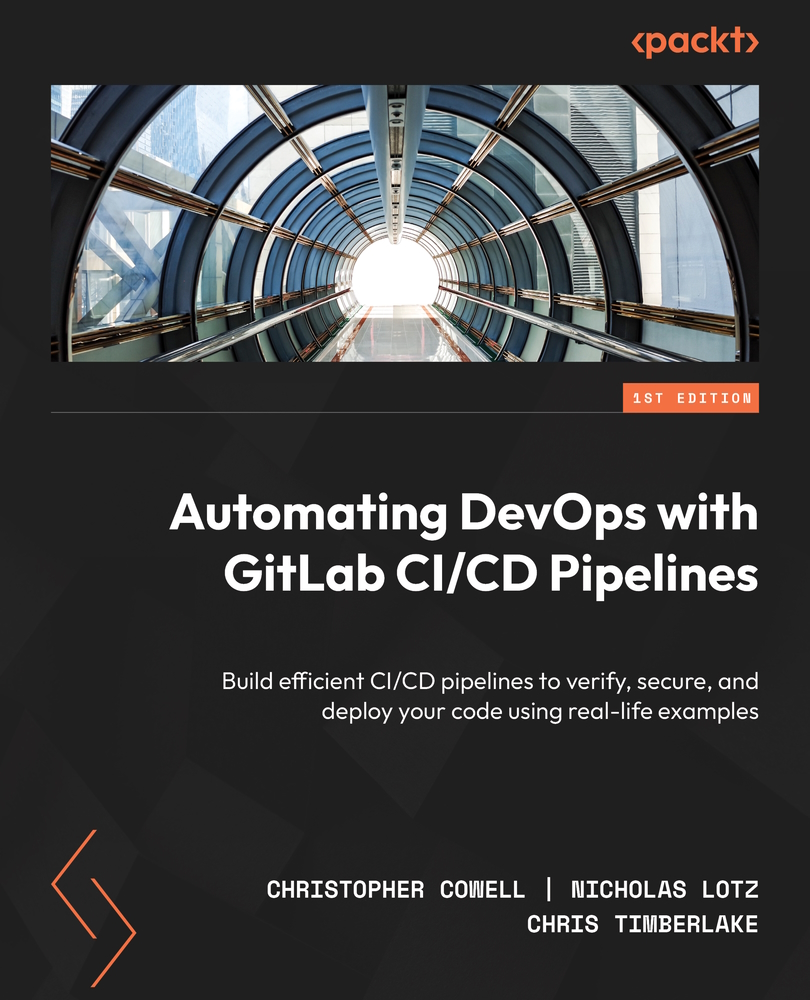Establishing the pipeline infrastructure
You’ve stored some code in the repository, so now it’s time to set up a pipeline to run a variety of tasks to build, verify, and secure your code. In some cases, you might also want to set up a GitLab Runner to execute those pipeline tasks, although that task is usually taken care of for you by your GitLab administrator or the GitLab SaaS platform.
Creating a pipeline
Pushing commits to GitLab so that it can run CI/CD pipelines on our new code won’t work unless we define what tasks we’d like our pipeline to perform. We’ll add several tasks to our Hats for Cats project’s pipeline as we go through the rest of this chapter, but for now, let’s get a bare-bones pipeline in place.
Just as we did with our initial file, we could create the .gitlab-ci.yml pipeline configuration file locally, commit it, and push it up to GitLab, but since the GitLab GUI offers a handy editor dedicated to writing...































































